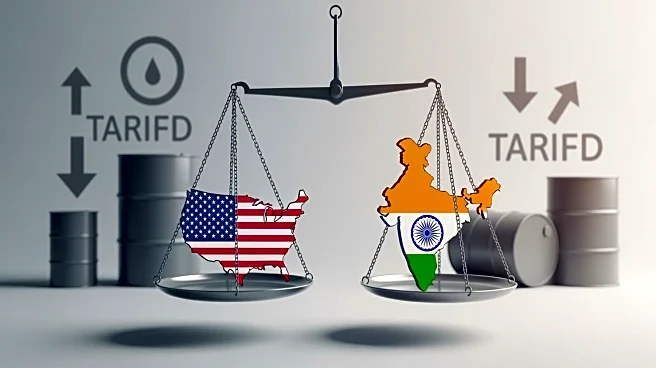What's Happening?
The United States and India are on the verge of finalizing a trade agreement that would significantly reduce tariffs on Indian imports from 50% to 15-16%. This development follows India's commitment to decrease
its reliance on Russian oil, a move that aligns with U.S. interests in curbing support for the Russia-Ukraine conflict. The negotiations also include potential easing of restrictions on U.S. corn and soymeal imports into India, addressing rising domestic demand. However, discussions on tariff reductions for dairy products remain unresolved. The trade talks are expected to conclude by November 2025, with a formal announcement likely at the upcoming ASEAN Summit.
Why It's Important?
This trade agreement is pivotal for both nations, as it could enhance bilateral trade and economic cooperation. For the U.S., reducing tariffs on Indian goods could open new markets for American products, particularly in agriculture and energy sectors. For India, diversifying its oil imports away from Russia aligns with global geopolitical strategies and could strengthen its economic ties with the U.S. The deal also reflects a strategic shift in India's trade policies, potentially impacting local industries and farmers. The agreement could set a precedent for future trade negotiations involving energy and agricultural products.
What's Next?
As the trade talks progress, both countries are expected to finalize the agreement by November 2025. The outcome of these negotiations could influence future trade policies and economic strategies between the U.S. and India. Stakeholders in agriculture and energy sectors will be closely monitoring the developments, as the agreement could lead to increased market access and investment opportunities. Additionally, the geopolitical implications of India's reduced reliance on Russian oil could affect its diplomatic relations and energy security strategies.












